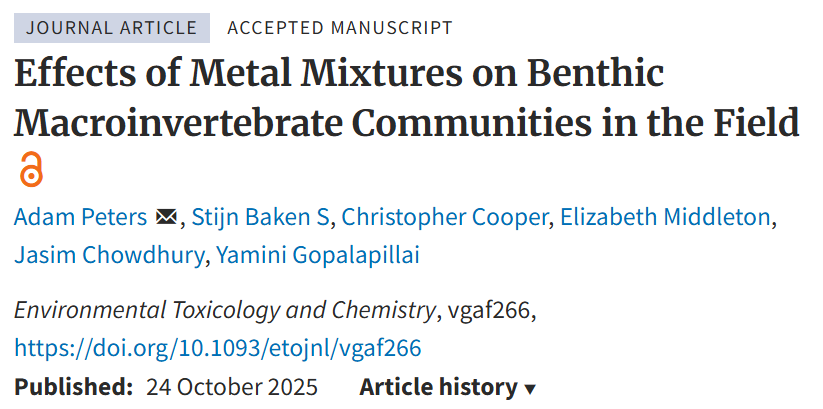November 7, 2025 by Adam Peters

Adam has recently published a paper analysing the effects of metal mixtures on benthic macroinvertebrate communities in the field. The study looked at four metals, copper, lead, nickel, and zinc, and used bio-met to calculate risk characterisation ratios for each metal in each sample. The overall risk due to these four metals was expressed as the sum of the individual risk characterisation ratios, following the Cumulative Criterion Units approach. The study used ecological monitoring data collected by the Environment Agency in England to assess the diversity of local communities, and the River Invertebrate Classification Tool was used to express the diversity data relative to unimpacted reference conditions following the approach for evaluating ecological quality under the Water Framework Directive. The data were analysed using quantile regression to derive a limiting function, which determines the maximum combined metal exposure that is consistent with no reduction in community diversity regardless of the presence of other stressors at the sites. The analysis found that a total risk characterisation ratio of 8.4 was consistent with a 10% decline in the maximum achievable diversity of the local benthic macroinvertebrate community. Overall, the study indicates that in real world field situations, where multiple stressors are present such as inorganic and organic pollutants, habitat, physical, climatic etc., if the Environmental Quality Standards for each of the individual metals considered are complied with it is unlikely that there would be any observable impact due to the cumulative toxicity of the mixture of these four metals.
From our blog
October 14, 2025 by Becky Brown
